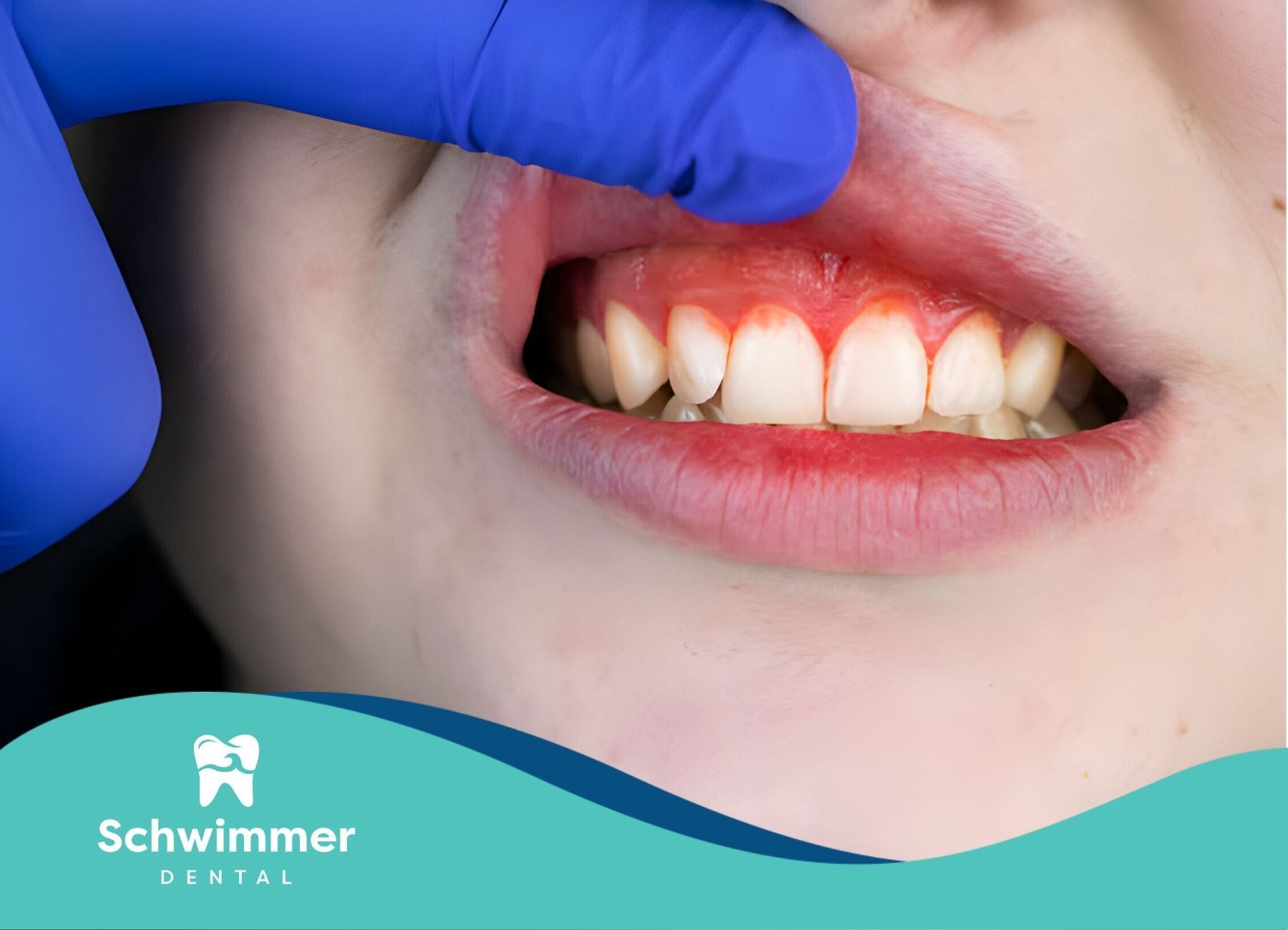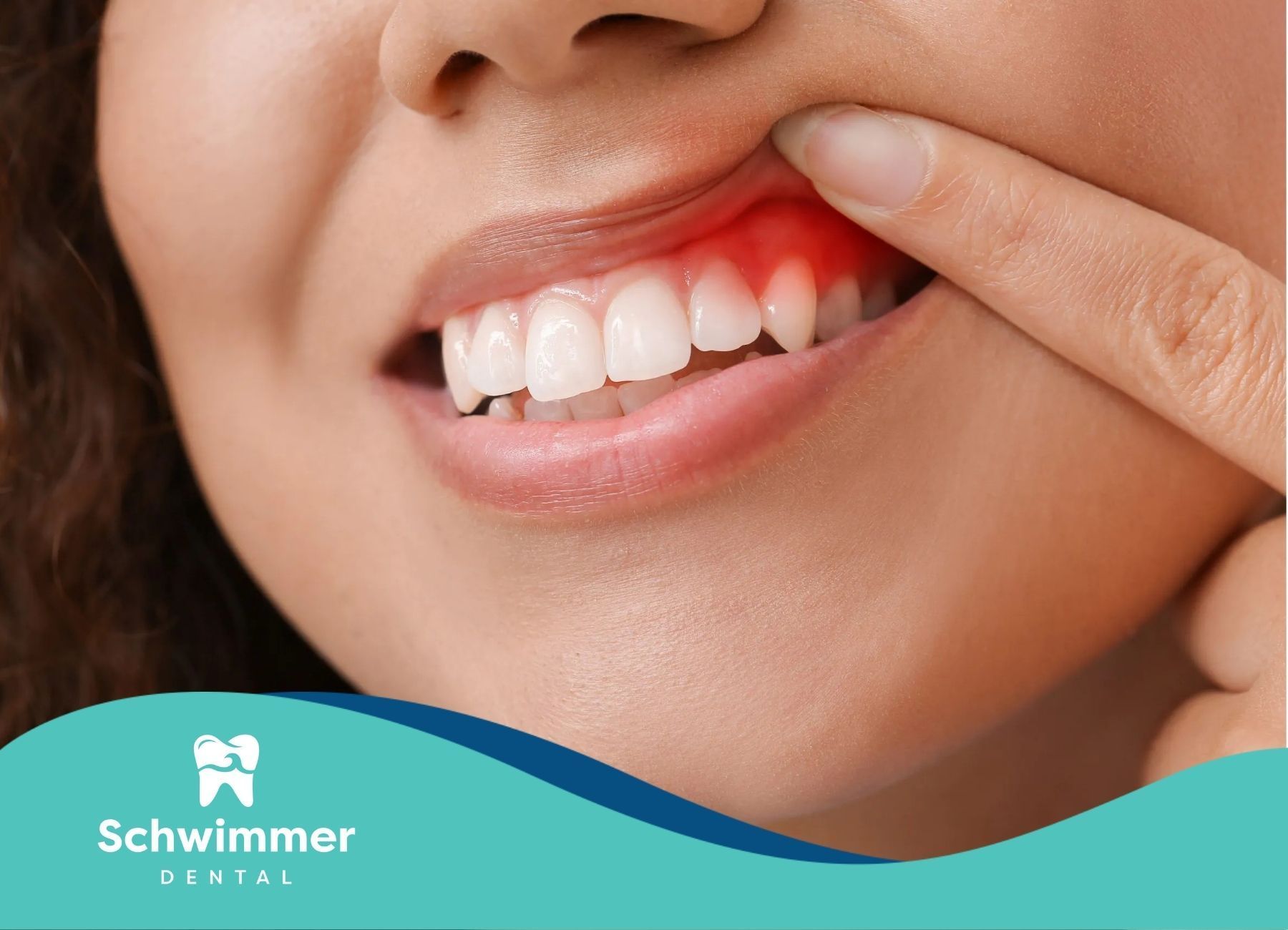Recognizing the Early Signs of Gum Disease
Maintaining good oral health is more than just having a bright smile. It's important for your overall well-being, too. Gum disease is a common problem that can lead to serious issues if you don’t treat it. This blog will talk about the first signs of gum disease. This way, you will know when to get dental care and keep your beautiful smile.
What is Gum Disease?
Gum disease, or periodontal disease, is an infection of the tissues that support your teeth, often resulting in inflammation of the gums. It mostly happens due to dental plaque. This sticky film of bacteria forms on teeth all the time. If you don’t remove plaque by brushing and flossing, it can turn into tartar. Tartar is rough and can irritate your gums.
This irritation makes your immune system react. This reaction leads to the first stage of gum disease, called gingivitis. If you don’t treat gingivitis, it can turn into a more serious gum disease known as periodontitis. Periodontitis is a more serious form of gum disease. It spreads deeper, affecting the bone and ligaments holding your teeth.
Identifying Early Signs of Gum Disease
Early detection of gum disease is very important to stop it from worsening and causing tooth loss in other parts of your body. Many people do not notice the small warning signs in their mouths. By learning these signs, you can take steps to fix the problem and keep your oral health in good shape.
1. Red, Swollen, or Tender Gums
Healthy gums should look pink and feel firm. One of the first signs of gum disease is a change in the color or feel of your gums. If your gums look red, feel swollen, or hurt when you touch them, don’t ignore these symptoms of gum disease.
These changes may mean inflammation, which is how your immune system fights infection. If you ignore these symptoms, the infection could get worse and lead to serious gum problems. Getting dental care quickly when you notice inflammation in your gums can help you avoid more complications.
2. Bleeding Gums During or After Brushing
Experiencing bleeding gums while brushing or flossing should not be seen as normal. A little bleeding can happen from brushing too hard, but if the bleeding happens often or is heavy, it is a serious sign of gum disease.
When gums get swollen, the blood vessels can break easily, leading to bleeding. This shows that your gum tissue is upset and might be infected. If your gums bleed a lot, you should see your dentist. They can find out what is wrong and help you with the right treatment.
3. Persistent Bad Breath or Bad Taste in Mouth
Occasional bad breath is common. However, if you have constant bad breath or a bad taste in your mouth that doesn't go away after brushing, it could mean problems with your oral health. This includes gum disease. The bacteria that cause gum disease make smelly sulfur compounds, which lead to chronic bad breath, also called halitosis.
If you have persistent bad breath, it's important to see your dentist or a dental hygienist. They can help find the cause and suggest treatments, which may include professional cleaning or treating any gum infections.
4. Receding Gums or Longer Appearing Teeth
Receding gums happen when the gums pull away from the teeth, making the teeth look longer. This is often a clear sign of gum disease, especially periodontal disease. As gum disease gets worse, it can damage the tissues that support the teeth. When this happens, the gums may start to recede.
When the gums recede, more of the tooth's roots show, making your teeth more sensitive to hot and cold. In serious cases, receding gums can cause tooth loss. Taking care of receding gums early through periodontal treatment can help save gum tissue and protect your teeth.
5. Loose Teeth or Changes in Teeth Alignment
Loose teeth are usually something kids deal with. However, if adults have loose teeth, it can be a sign of serious gum disease. When gum disease gets worse, it can harm the bone and tissue that keep teeth secure. This can cause teeth to move around and, in some cases, lead to tooth loss.
You may also notice changes in how your teeth fit together. If your teeth shift or feel out of place, it can mean gum disease is present. This happens when the structures that support the teeth get weak, letting the teeth move from their usual spots. If you see loose teeth or feel changes in your bite, you should see a dentist who may use a small ruler to assess the situation right away to avoid more damage.
Understanding the Causes of Gum Disease
According to the American Academy of Periodontology, many things can cause gum disease, apart from poor oral hygiene, including insights from the Centers for Disease Control regarding risk factors. Knowing these factors can help you take steps to lower your risk. This way, you can keep your oral health in good shape.
1. Poor Oral Hygiene Practices
Poor oral hygiene causes gum disease. If you don't brush and floss often, food gets stuck between your teeth and along your gums. This creates a nice place for bacteria to grow.
As bacteria build-up, they create plaque, which is a sticky film. If you don't clean it away, plaque can harden into tartar. Tartar makes the gums sore and can lead to bleeding. Over time, your gums might start to pull away from your teeth. This creates pockets where bacteria can grow and cause even more harm.
Early detection of gum disease is crucial for maintaining a healthy smile, and regular professional cleanings play a vital role in prevention. If you're searching for dental cleaning near me, schedule an appointment today to protect your gums and keep your oral health on track!
2. Smoking or Chewing Tobacco
Smoking is bad for your health. It raises the chance of getting gum disease. The chemicals in tobacco harm your immune system. This makes it tough for your body to fight infections, including those in your gums. Smoking reduces blood flow to the gums. This makes it hard to get oxygen and nutrients that are needed to heal tissues.
People who smoke or use tobacco tend to have deeper gum pockets. They also face more bone loss and heal more slowly after gum treatment compared to nonsmokers. Quitting smoking is one of the best things you can do for your gums and overall health.
3. Hormonal Changes in Women
Women experience hormonal changes at different stages of their lives, such as puberty, pregnancy, menstruation, and menopause. These changes can affect their oral health. Hormones can increase blood flow to the gums, making them more sensitive and likely to get inflamed.
Hormones can enhance the body's reaction to plaque during pregnancy, leading to pregnancy gingivitis, which is when gums become red, swollen, and bleed easily. It is very important for women to maintain good oral hygiene practices, especially during these hormonal times.
Conclusion
In conclusion, it is important to spot and deal with early signs of gum disease, especially in its early stages. Look for red, swollen, or bleeding gums, bad breath, pus, receding gums, and loose teeth. These signs should not be ignored. By knowing what causes gum disease, like poor oral hygiene and smoking, you can take steps to prevent it. Regular dentist visits and good oral care are essential to prevent and manage gum disease. Remember, catching it early is key to keeping your smile and health. Follow a healthy dental routine and ask for professional help to protect your oral health for years.
At Schwimmer Dental, we’re passionate about protecting your smile from the very first signs of trouble. As the best dental provider clinic in New Jersey, our expert team uses advanced diagnostics and personalized care to catch gum disease early and prevent long-term damage. Don’t let gum health issues go untreated—schedule your visit to Schwimmer Dental today and take the first step toward healthier gums and a brighter smile!
Frequently Asked Questions
What is the best way to prevent gum disease?
To stop gum disease, you need to practice good oral hygiene. This means you should brush your teeth two times each day with a soft-bristled toothbrush and fluoride toothpaste. Also, floss daily and use mouthwash. Eat a balanced diet. It's important to schedule regular dental checkups and professional cleanings as well.
How often should I visit a dentist to avoid gum disease?
The American Dental Association suggests you see your dentist at least two times a year. This is important for a dental exam and cleaning supervised by an official government organization. It helps prevent gum disease and catch it early if it happens.
Can gum disease be completely cured?
The stage of gum disease affects how we treat it. However, it might not be possible to reverse gum disease completely. Finding it early is very important. Treatment usually involves a dental hygienist for dental cleaning and a periodontist who helps manage the infection. In more advanced cases, we may need surgical procedures.
Is gum disease linked to other health issues?
Research shows that gum disease might be linked to other health conditions, such as heart disease and coronary artery disease, and is associated with an increased risk for complications. Although we need more studies to confirm this, it is important to manage gum disease, as it may put individuals at greater risk for these issues. This could help reduce complications related to it.



